Most beautiful places in Myanmar [ Best pictures 2025 ]
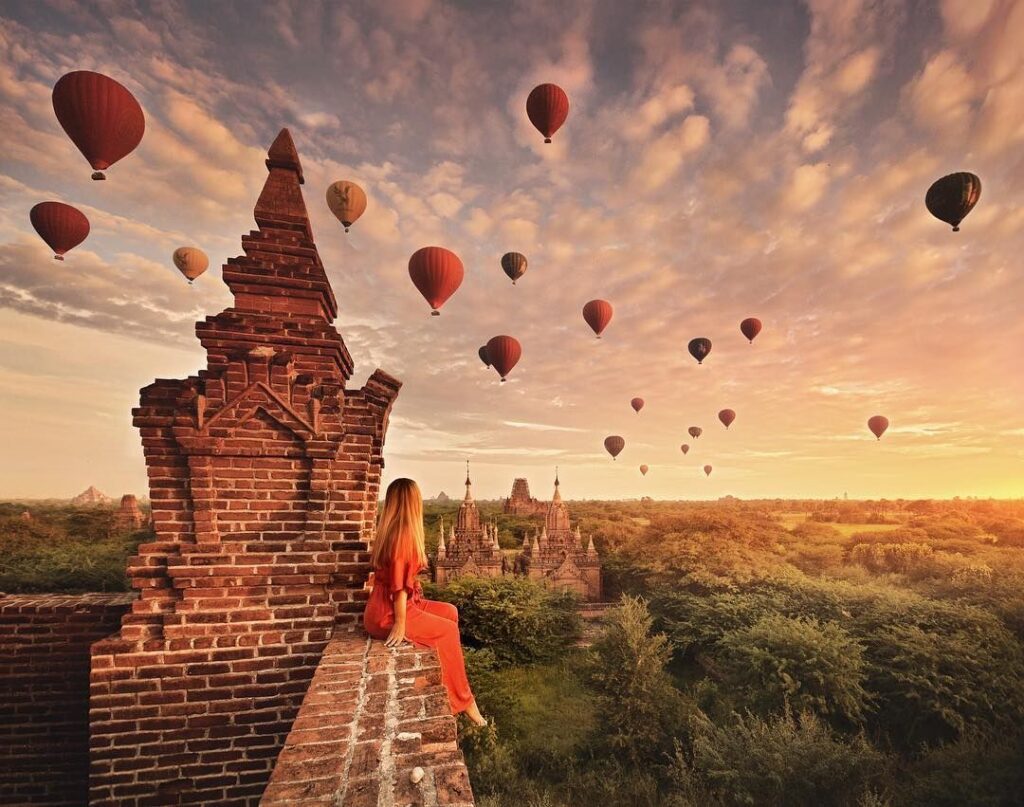
Unveiling Myanmar’s Hidden Treasures: A Journey Through the Land of Golden Pagodas

As I stepped off the plane in Yangon, the humid air thick with the scent of incense and spices, I knew my adventure through Myanmar was going to be unlike any other. From the glittering spires of ancient temples to the serene waters of Inle Lake, this Southeast Asian gem promised a tapestry of experiences that would leave an indelible mark on my traveler’s soul. Join me as I take you through the most beautiful places in Myanmar, sharing personal anecdotes, practical tips, and the kind of insider knowledge that only comes from boots-on-the-ground exploration.
A few facts about Myanmar Geography and Natural Landscapes

Myanmar’s geography is characterized by a diverse array of landscapes, from the highlands of Shan State to the coastal plains along the Bay of Bengal. The country’s natural features play significant roles in its cultural and economic life.
Shan State and Mount Popa
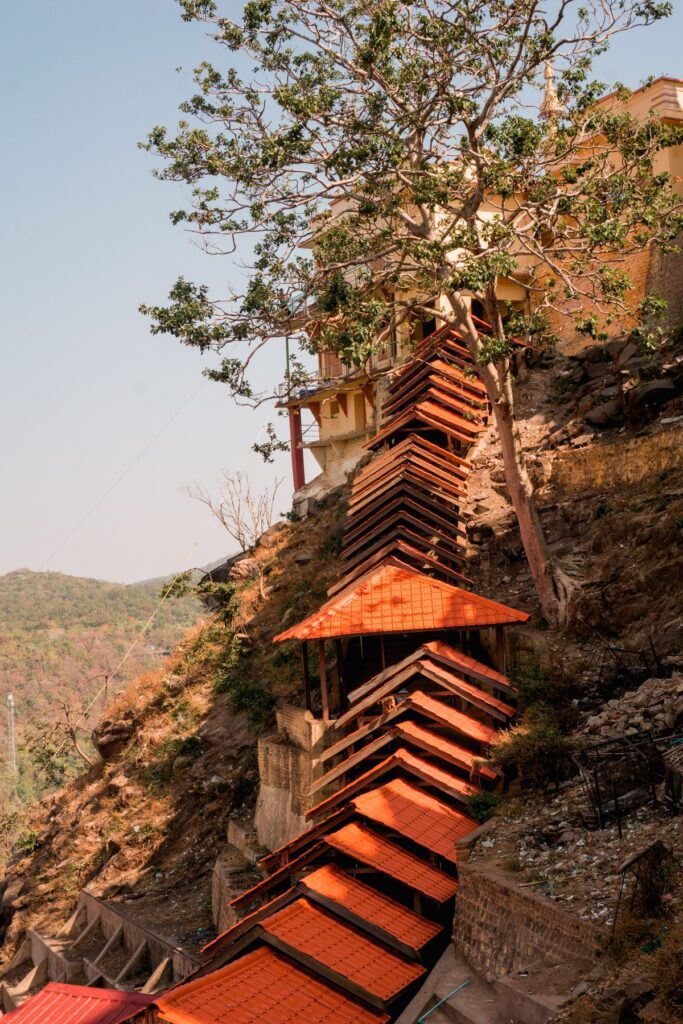
Shan State, located in the eastern part of the country, is known for its Shan Plateau, which features deep limestone river gorges and an average elevation of about 914 meters (3,000 feet) . The plateau is home to Inle Lake, famous for its floating gardens and stilt-house villages.Mount Popa, an extinct volcano rising to 1,518 meters (4,981 feet), is considered a sacred site and believed to be the home of the 37 nats, or spirits, integral to Burmese local religion .Mount Popa, an extinct volcano and sacred site in Myanmar
Bay of Bengal and Mergui Archipelago
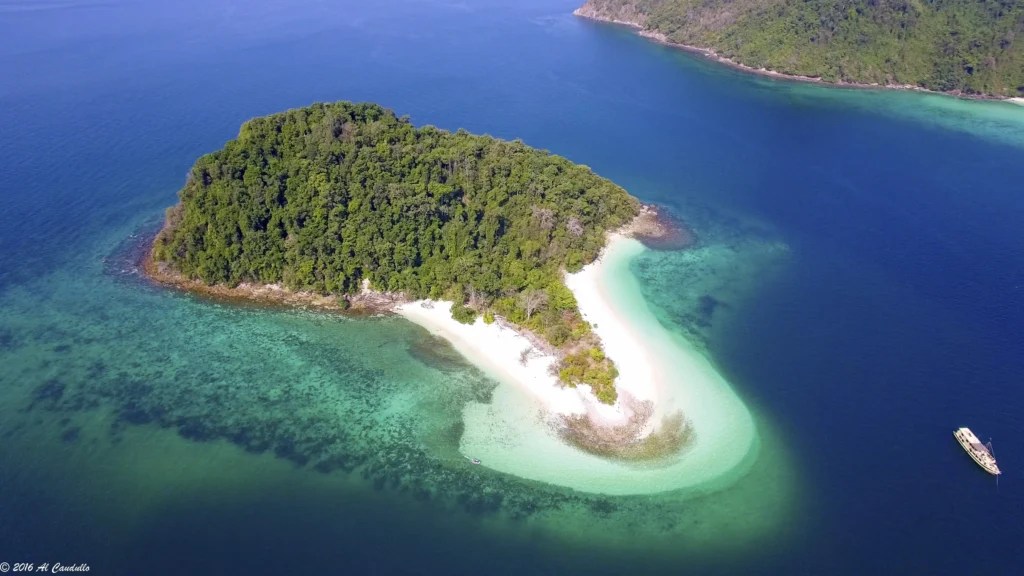
Myanmar’s western coastline is bordered by the Bay of Bengal, stretching approximately 1,930 kilometers (1,197 miles) . The Mergui Archipelago, located in the Andaman Sea, consists of over 800 islands known for their pristine beaches and diverse marine life.
Irrawaddy River

The Irrawaddy River, flowing over 2,170 kilometers (1,350 miles), is Myanmar’s most important river and primary drainage system . It supports a fertile delta region crucial for agriculture and serves as a vital transportation route .The shores of the Irrawaddy River near Bagan.
Historical and Cultural Aspects
Myanmar’s rich history and culture are deeply rooted in its Buddhist heritage, colonial past, and vibrant traditional markets.
Buddhist Heritage
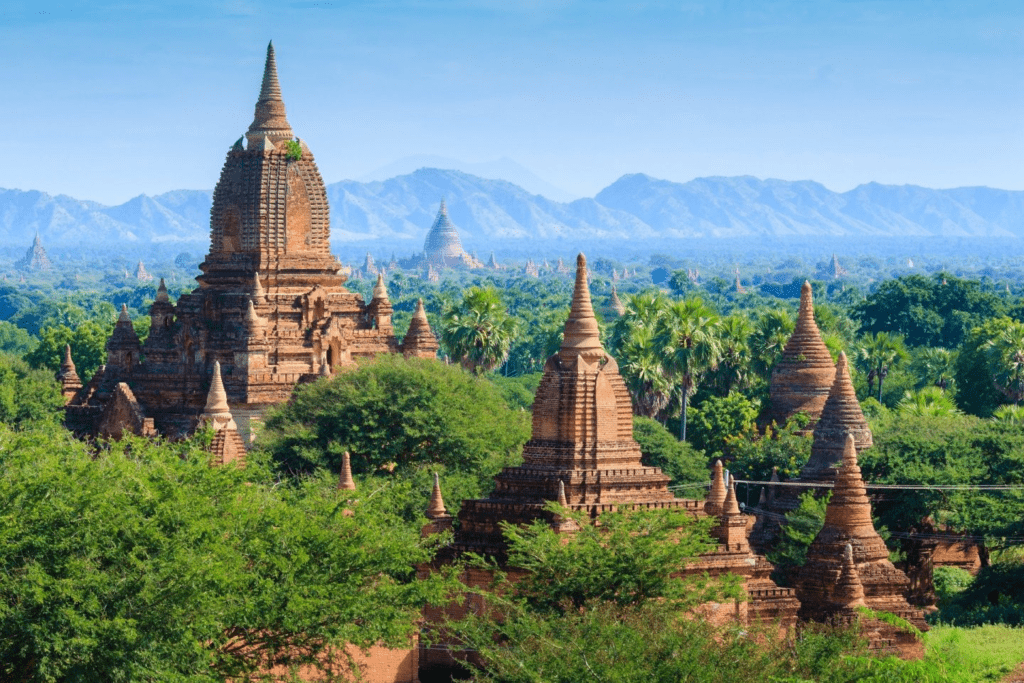
Theravāda Buddhism has been the state religion since 1961 and is practiced by nearly 90% of the population . The religion’s influence is evident in the country’s architecture, with magnificent temples and pagodas in cities like Yangon, Mandalay, and Bagan.
Colonial History
Myanmar’s colonial history began with British annexation in 1885, leading to significant social and economic changes. This period exacerbated ethnic tensions and contributed to the rise of nationalism, culminating in independence in 1948.
Traditional Markets
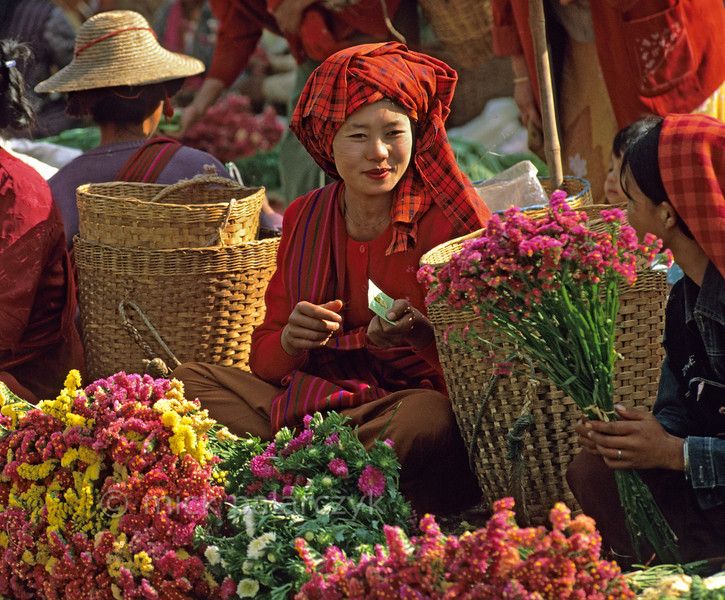
Traditional markets in Myanmar are vibrant centers of cultural exchange, offering insight into the country’s diverse ethnic tapestry and culinary traditions.
Major Cities and Tourist Attractions
Yangon
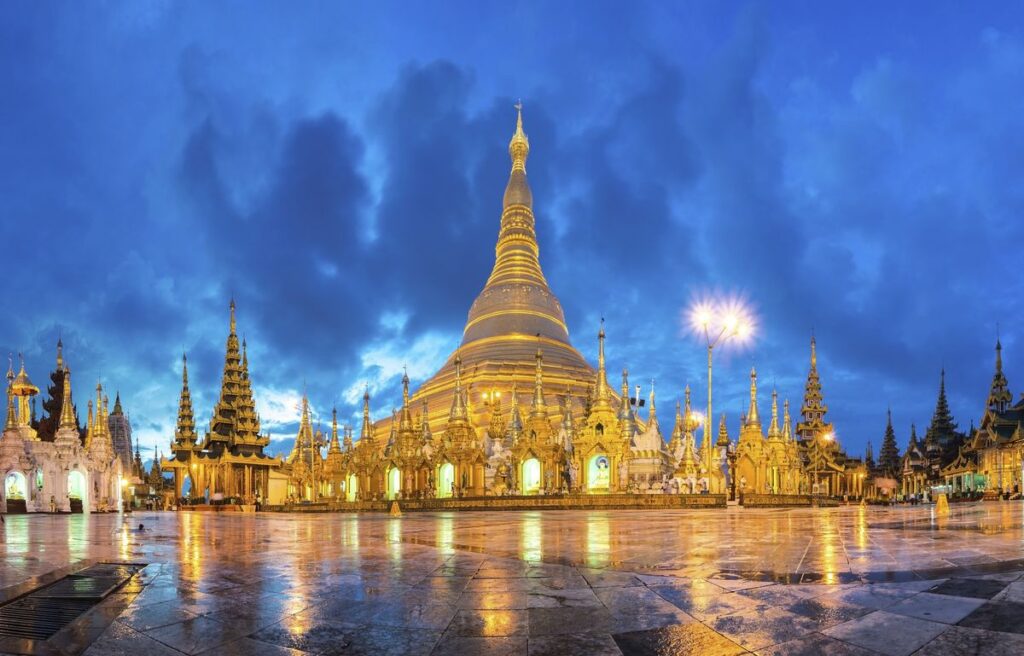
Yangon, the largest city, is known for its rich cultural heritage, including the iconic Shwedagon Pagoda and colonial architecture.
Bagan

Bagan, a UNESCO World Heritage Site, boasts over 2,000 ancient temples, pagodas, and stupas dating back to the 9th to 13th centuries.
Mandalay

Mandalay, the second-largest city, is famous for its cultural sites, including the U Bein Bridge and Mandalay Hill.
Pyin Oo Lwin
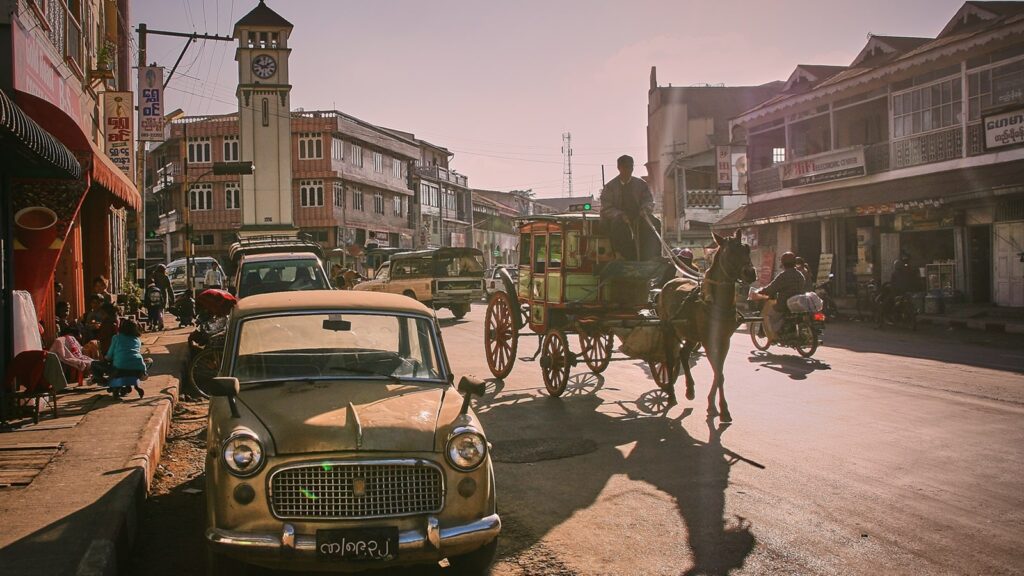
Pyin Oo Lwin, a scenic hill town, is known for its colonial architecture, botanical gardens, and cool climate.
Emerging Tourist Destinations
Ngwe Saung Beach
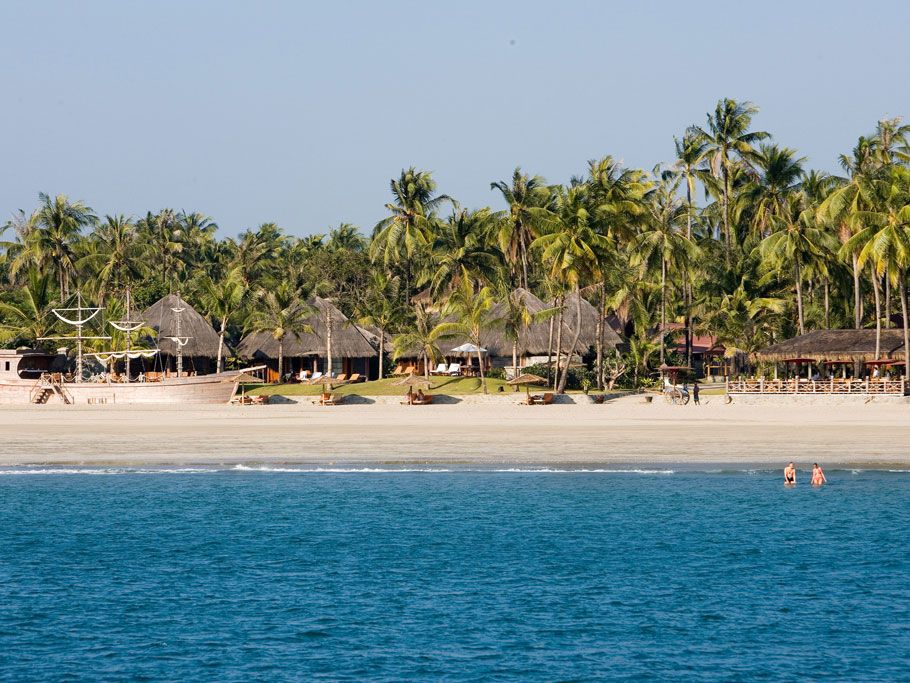
Ngwe Saung Beach offers a tranquil alternative to more popular beaches, with its 9-kilometer stretch of white sands and clear blue waters .
Mon State

Mon State, home to the famous Golden Rock (Kyaiktiyo Pagoda), provides a blend of cultural and natural attractions, including historical sites in Bago.
Tourist Activities
Popular tourist activities in Myanmar include train rides on the Yangon Circular Train and across the Goteik Viaduct, boat tours on the Irrawaddy River and Inle Lake, and visiting pagodas such as the Shwedagon Pagoda in Yangon and the temples of Bagan.
In conclusion, Myanmar offers a diverse range of experiences for travelers, from its rich Buddhist heritage and colonial history to its stunning natural landscapes and emerging beach destinations. As the country continues to open up to tourism, it promises unforgettable adventures for those seeking to explore its unique blend of history, culture, and natural beauty.
Bagan: Where Temples Touch the Sky
The majestic Chinthe guarding the entrance to a temple in Bagan My journey began in Bagan, and let me tell you, no photo can prepare you for the breathtaking expanse of ancient temples that stretch as far as the eye can see. As the sun rose over the misty plains, I found myself stop a crumbling pagoda, surrounded by thousands of brick structures, each with its own story etched in stone. Bagan isn’t just a place; it’s a journey through time. This ancient city, once the capital of the Pagan Kingdom from the 9th to the 13th centuries, is home to over 2,000 temples, pagodas, and stupas. The architectural styles here are a testament to the evolution of Buddhist art and architecture in Myanmar, making Bagan a UNESCO World Heritage Site that’s not to be missed.
Hot Air Balloon Ride: A Must-Do Experience

One of the most magical experiences in Bagan is taking a hot air balloon ride at sunrise. As we gently ascended, the landscape unfurled beneath us like a living map of history. The soft light of dawn painted the temples in hues of gold and amber, creating a scene so surreal it felt like stepping into a dream.
Pro tip: Book your balloon ride well in advance, especially if you’re visiting during the high season from November to March. The experience isn’t cheap, but it’s worth every kyat for the unforgettable memories.
Exploring the Temples
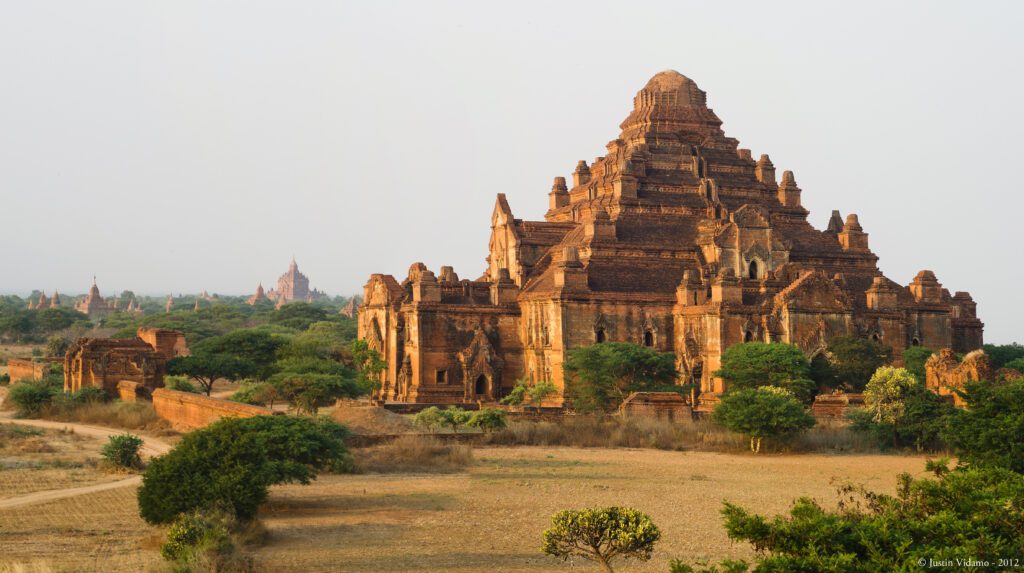
While the big-name temples like Ananda and Dhammayangyi are must-visits, don’t overlook the smaller, less crowded structures. I found some of my most profound moments in the quiet corners of lesser-known pagodas, where the weight of history felt palpable in the cool, dark interiors.
Insider advice: Rent an e-bike to explore the temple complex. It’s an eco-friendly way to cover more ground, and you’ll have the freedom to stop and explore at your own pace.
Shwedagon Pagoda: Yangon’s Golden Heart
The magnificent Shwedagon Pagoda, a symbol of Myanmar’s spiritual devotion No trip to Myanmar is complete without a visit to the Shwedagon Pagoda in Yangon. As I approached this golden marvel, I was struck by its sheer size and the way it dominates the city skyline. The pagoda is believed to be over 2,500 years old and is said to enshrine relics of four Buddhas, including strands of Gautama Buddha’s hair.
A Spiritual Experience

Visiting Shwedagon is more than just ticking off a tourist attraction; it’s a deeply spiritual experience. I watched as locals circled the stupa, offering prayers and flowers, their devotion palpable in the air. The best time to visit is in the evening when the golden stupa is beautifully illuminated, creating a magical atmosphere.
Cultural tip: Remember to dress modestly, covering your shoulders and knees, and be prepared to remove your shoes before entering the pagoda complex.
Inle Lake: A Serene Waterland
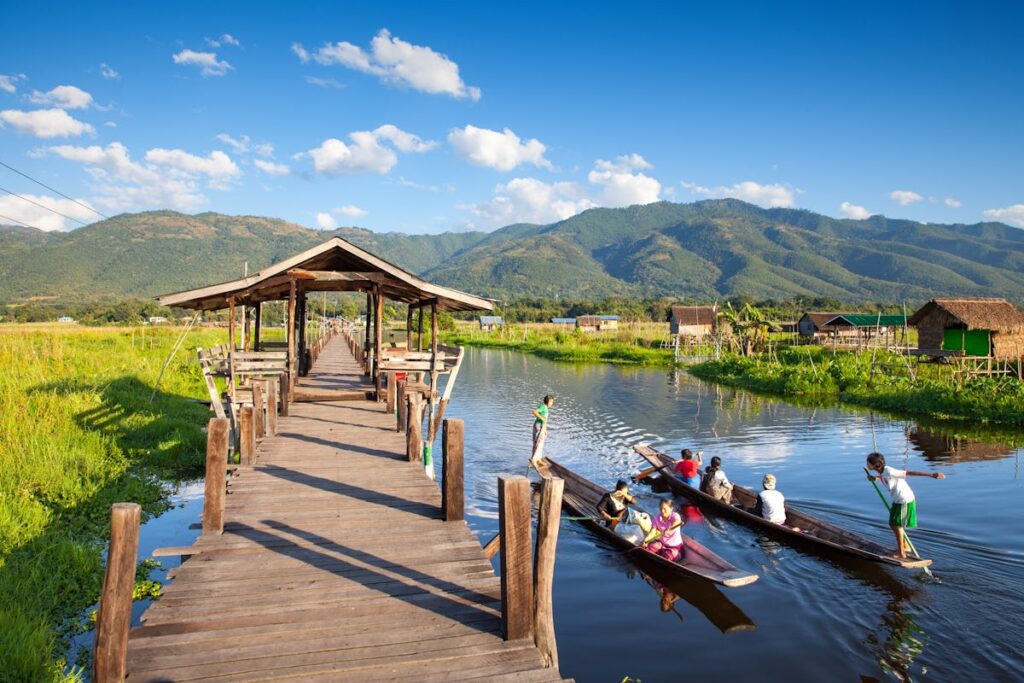
A traditional Intha fisherman demonstrating the unique leg-rowing technique on Inle Lake After the hustle and bustle of Yangon, Inle Lake felt like stepping into a different world. This vast, serene body of water is not just a natural wonder but a cultural hub that offers a glimpse into a way of life that has remained largely unchanged for centuries.
The Unique Intha Culture

One of the most fascinating aspects of Inle Lake is the Intha people and their unique leg-rowing technique. Watching the fishermen balance on one leg while wrapping the other around an oar to propel their boats was like witnessing a graceful water ballet. I spent days exploring the lake by boat, visiting floating gardens where vegetables are grown on beds of water hyacinth, and stopping at stilted villages to watch skilled artisans at work. The silk weaving and cheroot-making demonstrations were particularly fascinating, showcasing the ingenuity and craftsmanship of the local people.
Indein: A Hidden Gem
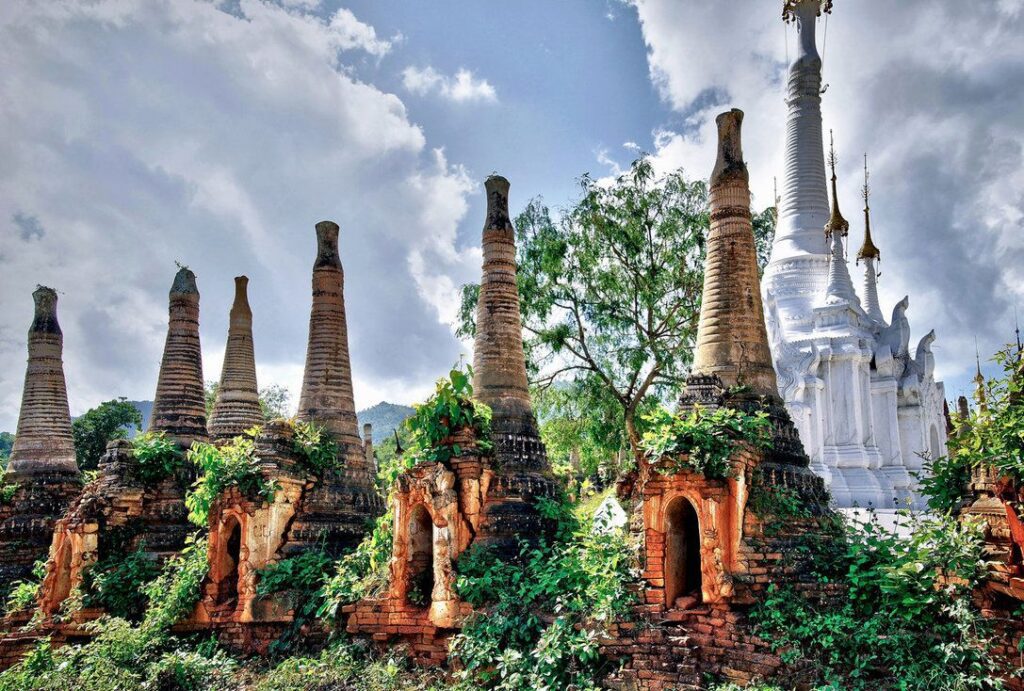
While on Inle Lake, don’t miss a trip to Indein. This lesser-known site is home to hundreds of ancient pagodas in various states of decay and restoration. As I wandered through the forest of stupas, some overgrown with vegetation, I felt like an explorer discovering a lost city.
Travel tip: The best time to visit Inle Lake is during the cool season from November to February when the weather is pleasant and the famous leg-rowing races take place.
Mandalay: The Cultural Heart of Myanmar
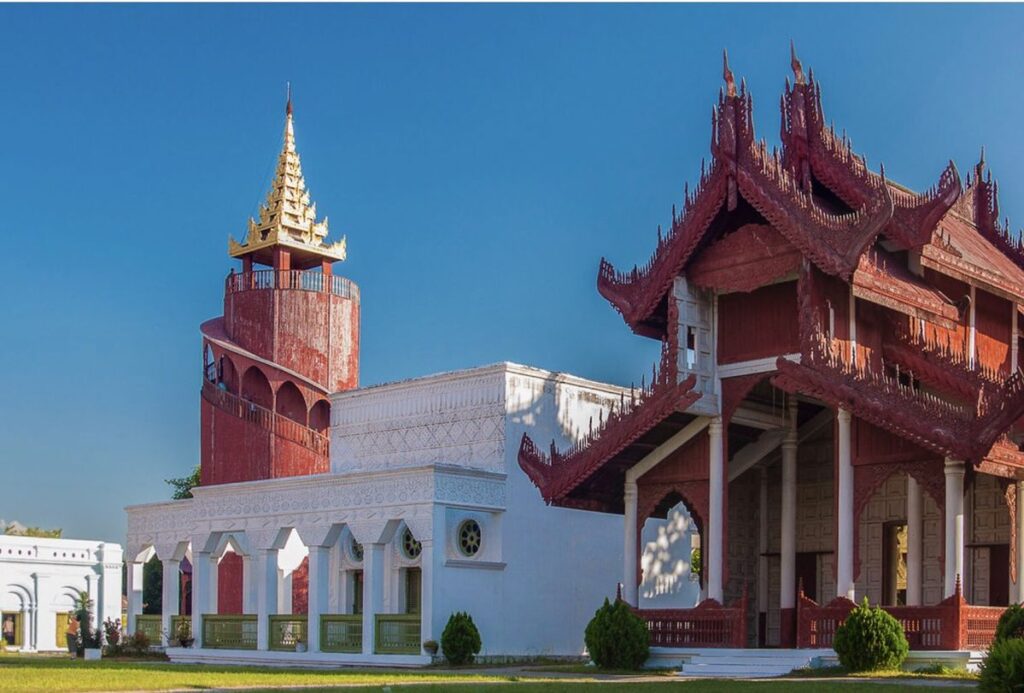
Mandalay, the last royal capital of Myanmar, is a city that pulsates with cultural significance. As I explored its wide avenues and climbed Mandalay Hill for panoramic views, I could feel the weight of history in every step.
Mandalay Palace and Kuthodaw Pagoda

The reconstructed Mandalay Palace offers a glimpse into the opulent lives of Myanmar’s last monarchs. But it was the Kuthodaw Pagoda, known as the “world’s largest book,” that truly captured my imagination. The sight of 729 marble slabs, each inscribed with Buddhist scriptures, was both impressive and humbling.
Artisan Workshops

Mandalay is renowned for its traditional arts and crafts. I spent an afternoon watching skilled artisans create intricate marble carvings and delicate gold leaf. The precision and patience required for these crafts left me in awe of Myanmar’s artistic traditions.
Cultural insight: If you’re interested in Buddhism, Mandalay is an excellent place to engage in discussions with monks. Many are eager to practice their English and share insights into their way of life.
Golden Rock: Defying Gravity and Belief
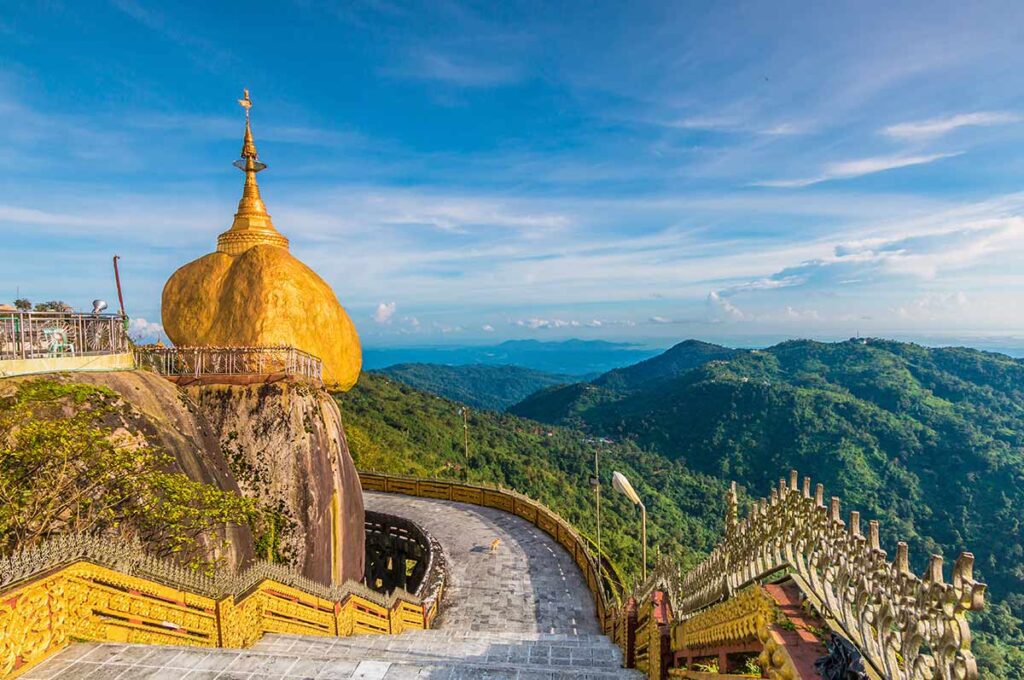
A Buddha statue reminiscent of the spiritual significance found at sites like Golden Rock The journey to Golden Rock, or Kyaiktiyo Pagoda, is an adventure in itself. As our truck wound its way up the mountain, the anticipation built. And then, suddenly, there it was – a massive golden boulder perched precariously on the edge of a cliff, seemingly defying the laws of physics.
Legend has it that the rock is held in place by a single strand of Buddha’s hair, and the spiritual energy at the site is palpable. Watching pilgrims place gold leaf on the rock and seeing the sun set behind this golden marvel was a moment of pure magic.
Traveler’s note: The climb to Golden Rock can be challenging, but the views and experience are worth the effort. If you’re not up for the hike, you can take a truck most of the way up.
U Bein Bridge: Sunset Over Teak
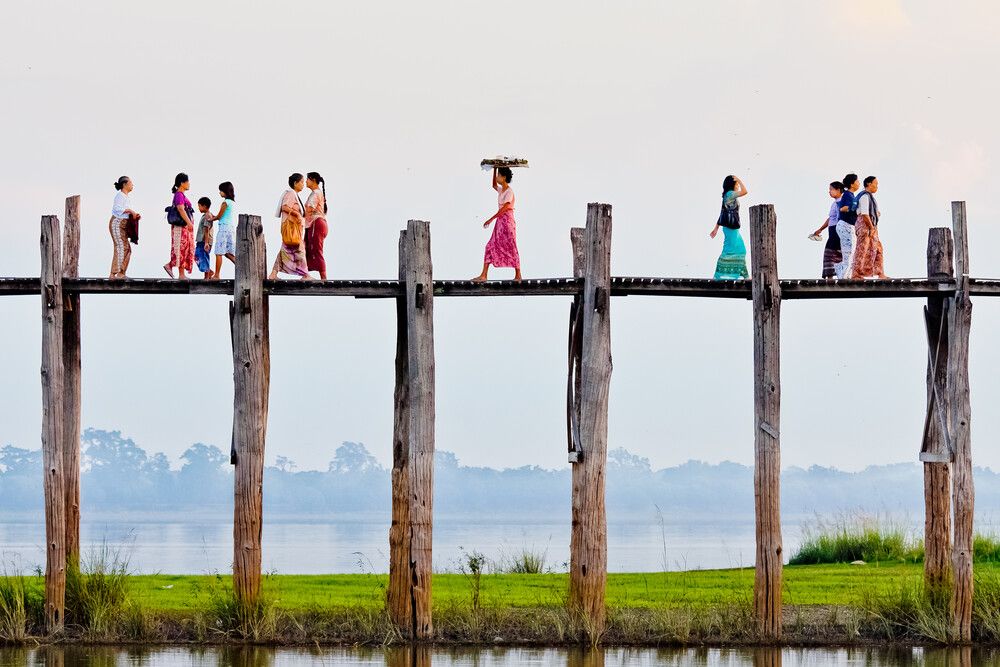
No visit to Myanmar is complete without experiencing the iconic U Bein Bridge in Amarapura. At 1.2 kilometers, it’s the longest teak bridge in the world and a bustling thoroughfare for locals. I arrived in the late afternoon to secure a prime spot for sunset. As the sky turned shades of orange and pink, silhouettes of monks and locals crossing the bridge created a scene straight out of a postcard. It’s a photographer’s dream and a moment of tranquility amidst the journey.
Photography tip: For the best shots, consider taking a boat ride under the bridge during sunset. The reflections on the water add an extra dimension to your photos.
Ngapali Beach: Myanmar’s Coastal Paradise
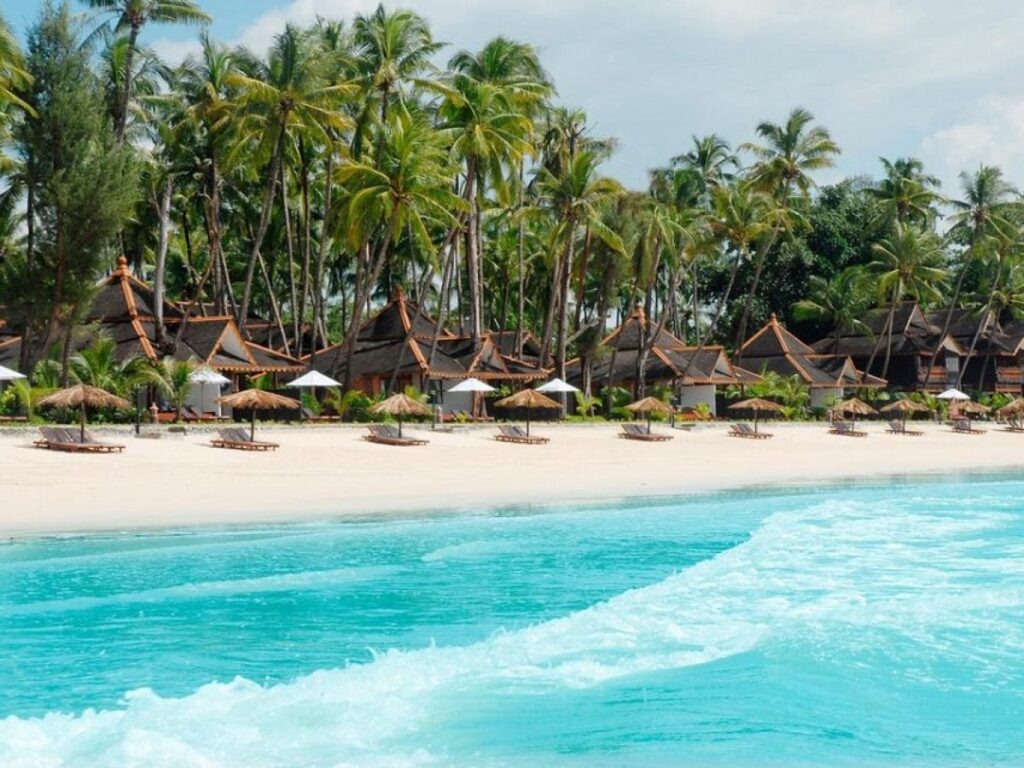
After weeks of temple-hopping and cultural immersion, Ngapali Beach offered a welcome change of pace. With its pristine white sands and clear turquoise waters, it’s the perfect spot to unwind and reflect on your Myanmar adventures. I spent lazy days swimming, indulging in fresh seafood, and watching fishermen bring in their daily catch. The laid-back atmosphere and lack of large-scale development make Ngapali feel like a secret slice of paradise.
Beach bum tip: While Ngapali is developing, it still retains a quiet charm. Visit soon to experience its unspoiled beauty before the secret gets out!
Off the Beaten Path: Myanmar’s Hidden Gems
While the above destinations are must-sees, Myanmar has so much more to offer for those willing to venture off the typical tourist trail.
Mrauk U: The Forgotten City

Mrauk U, an ancient city in Rakhine State, is often overlooked by travelers but offers a unique and rewarding experience. The journey there, usually involving a boat ride through picturesque landscapes, is an adventure in itself. Once you arrive, you’ll find ancient temples and a tranquil atmosphere that feels worlds away from the more touristy areas of Myanmar .
Hpa-An: Karst Mountains and Mystical Caves
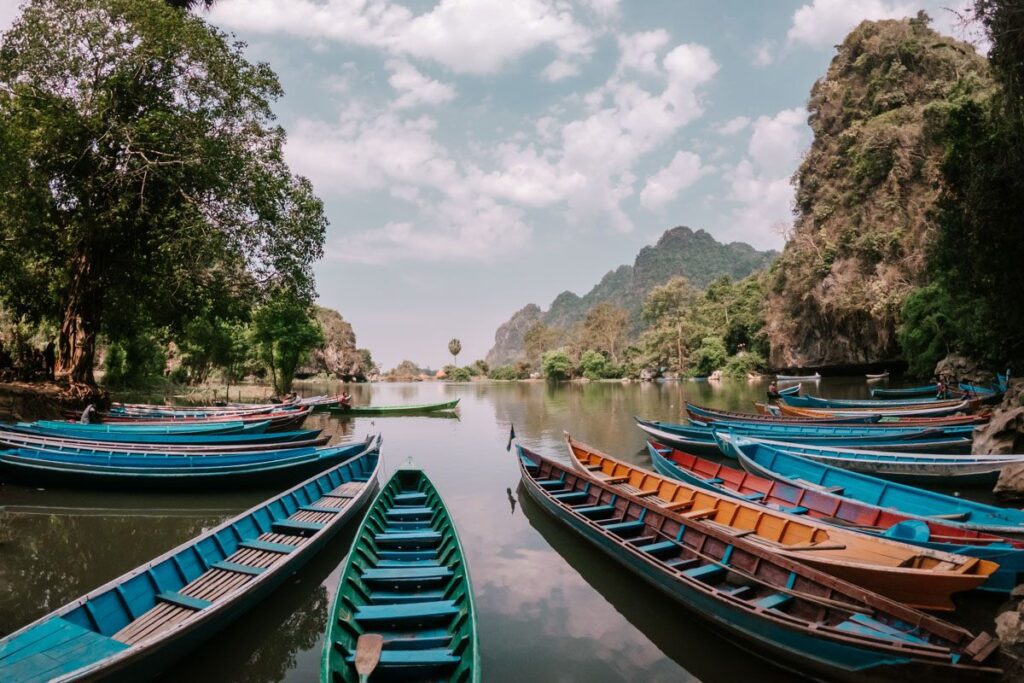
The area around Hpa-An is a nature lover’s paradise. I spent days exploring the stunning Saddar Cave, hiking through lush green fields, and kayaking on the serene Thanlwin River. The karst landscape here is reminiscent of places like Guilin in China but without the crowds .
Indawgyi Lake: A Birdwatcher’s Haven
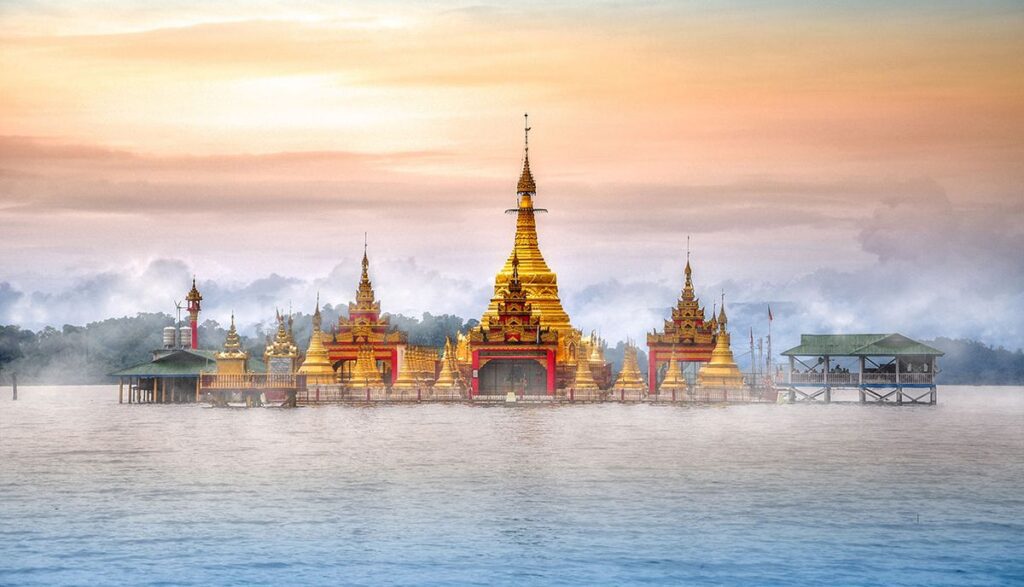
For those seeking true solitude, Indawgyi Lake in Kachin State is a hidden gem. As one of Southeast Asia’s largest lakes, it’s a haven for birdwatchers and nature enthusiasts. I spent peaceful days here, observing rare bird species and interacting with local communities that rarely see foreign visitors .
Practical Travel Tips for Myanmar
Best Time to Visit
The best time to visit Myanmar is during the cool season from November to March. This period offers comfortable temperatures and dry weather, ideal for exploring the country’s many outdoor attractions . However, this is also the peak tourist season, so book accommodations in advance, especially in popular destinations like Bagan and Inle Lake.
Getting Around
Myanmar offers various transportation options, each with its own charm:
Buses: Overnight buses are a cost-effective way to cover long distances. Companies like JJ Express offer comfortable services with reclining seats.
Trains: While slower and bumpier than buses, trains offer a unique local experience. The Yangon Circular Railway is a great way to see the city and interact with locals.
Flights: Domestic flights are available but can be pricey. They’re a good option if you’re short on time.
E-bikes and Tuk-tuks: For short distances, especially in places like Bagan, e-bikes and tuk-tuks are convenient and fun ways to explore.
Cultural Etiquette
Respecting local customs is crucial in Myanmar:
Dress modestly, especially when visiting religious sites. Cover your shoulders and knees .
Remove shoes and socks before entering temples and pagodas.
Ask permission before taking photos of locals.
Women should avoid physical contact with monks, even accidentally.
Money Matters
The official currency is the Myanmar Kyat, but US dollars are widely accepted for larger transactions. It’s advisable to carry cash, as credit cards are not widely accepted outside major hotels in Yangon and Mandalay .
Safety and Political Situation
While Myanmar is generally safe for tourists, it’s important to stay informed about the current political situation. Since the military coup in February 2021, there have been increased security risks in certain areas. Always check travel advisories from your home country before and during your trip.
Embracing the Spirit of Myanmar
As I reflect on my journey through Myanmar, I’m struck by the warmth and resilience of its people. Despite the challenges the country has faced, the spirit of kindness and hospitality shines through in every interaction.From the glittering spires of Shwedagon Pagoda to the tranquil waters of Inle Lake, Myanmar offers a travel experience that is both profound and transformative. It’s a land where ancient traditions coexist with a rapidly changing modern world, creating a tapestry of experiences that will stay with you long after you’ve returned home.
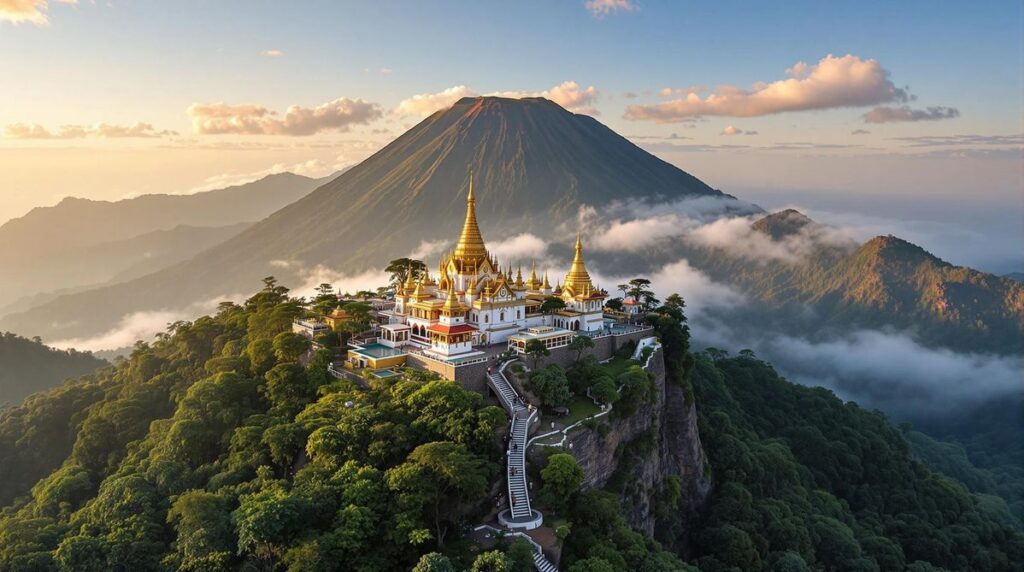
Whether you’re exploring the temples of Bagan, watching the sunset from U Bein Bridge, or venturing off the beaten path to places like Mrauk U, Myanmar has a way of capturing your heart and imagination. It’s a country that rewards the curious traveler with moments of beauty, insight, and connection.As you plan your own Myanmar adventure, remember to travel with an open heart and mind. Embrace the unexpected, engage with the local culture, and allow yourself to be transformed by the magic of this extraordinary land. Myanmar may be known as the Golden Land, but its true treasure lies in the golden memories you’ll create along the way.
So pack your bags, bring your sense of adventure, and prepare to be enchanted by Myanmar – a country that truly lives up to its reputation as one of Southeast Asia’s most captivating destinations.
WHO AM I ?
Hello!
I’m Eric, a French Australian citizen based between Australia, Asia and Bali and I love to travel and experience the world. I generally like outdoor activities, wellness, great food and venues , party and real local adventures ! I am a Yoga practitioner and fitness lover
I created this blog because I love to travel and I want to share my experiences with others. I’ve been traveling since I was a child, and I’ve been to over 50 countries. I’ve seen some amazing things and met some amazing people, and I want to help others experience the same things.
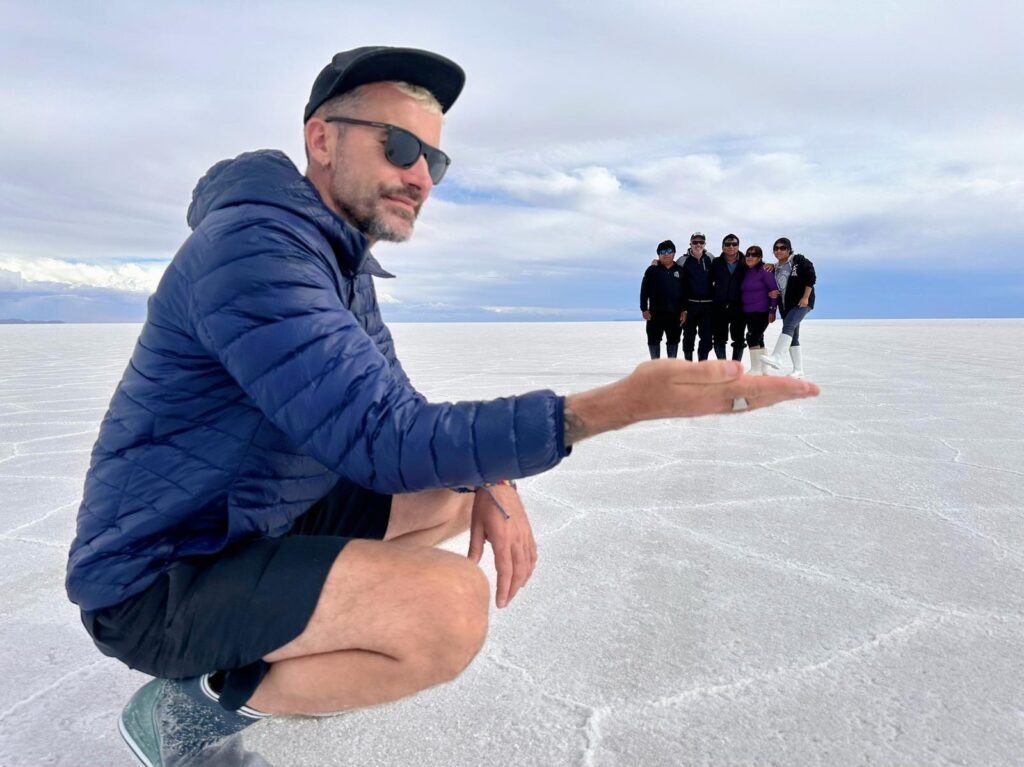
I believe that travel is one of the best ways to learn about the world and about yourself. When you travel, you’re forced to step outside of your comfort zone and experience new things. You learn about different cultures, different religions, and different ways of life. You also learn about yourself, your strengths, and your weaknesses.
Travel can also be a great way to make new friends. When you’re traveling, you’re surrounded by people from all over the world, and you’re all in the same boat. You’re all there to explore and experience new things, and that can create a bond between people.
Let’s connect together!
I hope that my travel blog will inspire others to travel and to see the world. I also hope that it will help people to learn about different cultures and to become more open-minded.





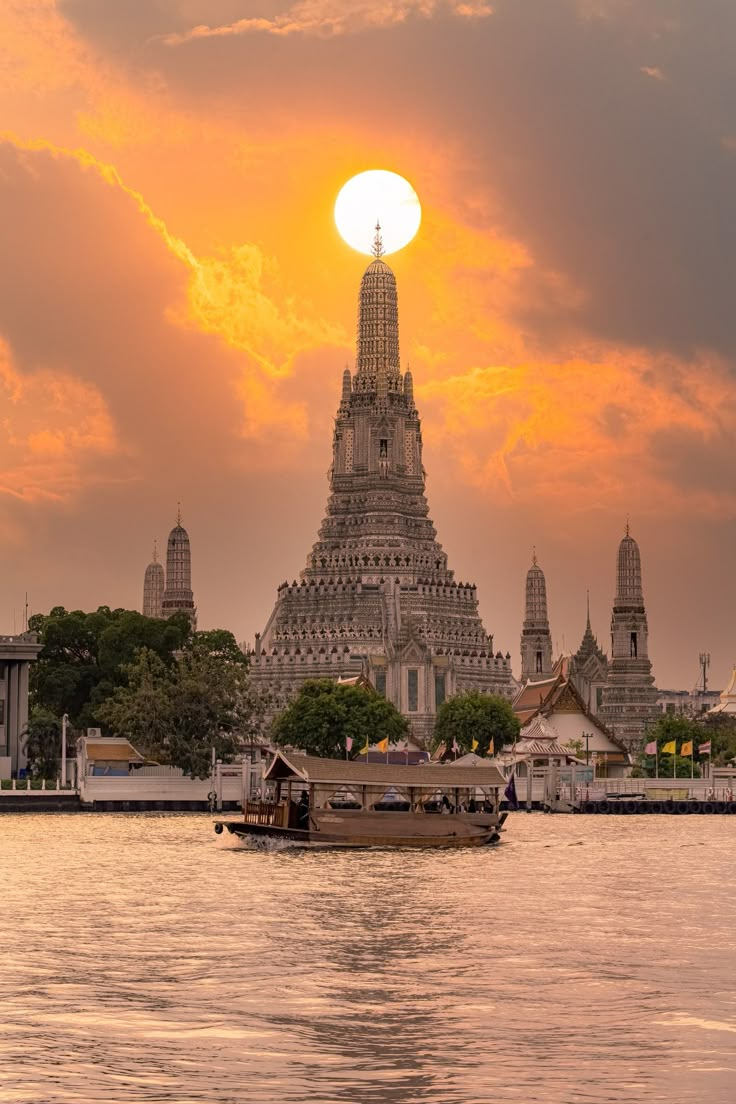
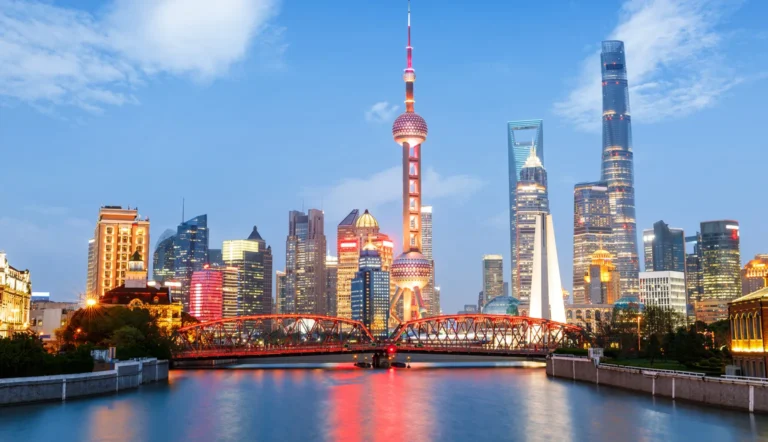
![What To Do in Kerala? 6 Places You Can’t Miss [Guide 2025]](https://funkyfreshtravels.com/wp-content/uploads/2025/05/31bc84e0fa95c63cffe8a77f39d3e894-768x1152.jpg)
